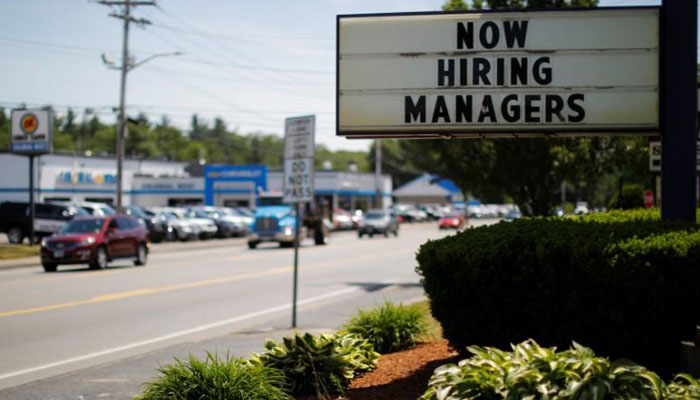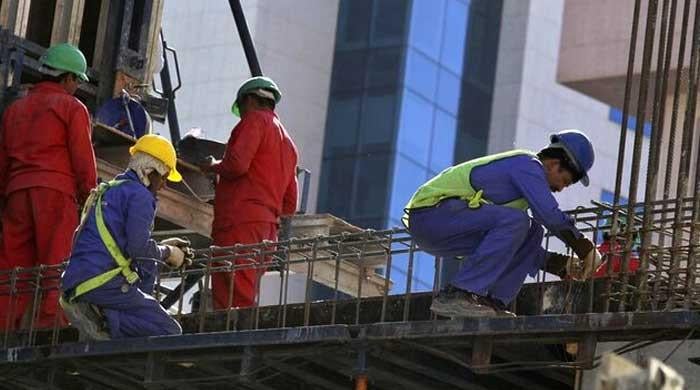US jobless claims fall, mid-Atlantic manufacturing slows
The US central bank described the labor market as 'strong'
June 21, 2018

WASHINGTON: The number of Americans filing for unemployment benefits unexpectedly fell last week, pointing to a further tightening in labor market conditions.
Other data on Thursday showed a moderation in factory activity in the mid-Atlantic region in June amid a decline in new orders. Firms, however, continued to report overall increases in employment this month.
Initial claims for state unemployment benefits decreased 3,000 to a seasonally adjusted 218,000 for the week ended June 16, the Labor Department said. Economists polled by Reuters had forecast claims rising to 220,000 in the latest week. Claims have now declined for four straight weeks.
The labor market is viewed as being near or at full employment, with the jobless rate at an 18-year low of 3.8 percent. The unemployment rate has dropped by three-tenths of a percentage point this year and is near the Federal Reserve’s forecast of 3.6 percent by the end of this year.
The Labor Department said claims for Maine were estimated last week. The four-week moving average of initial claims, viewed as a better measure of labor market trends as it irons out week-to-week volatility, dropped 4,000 to 221,000 last week.
The claims data covered the survey period for the nonfarm payrolls component of June’s employment report. The four-week average of claims rose 7,500 between the May and June survey weeks, suggesting some moderation in job growth this month. Nonfarm payrolls increased by 223,000 jobs in May.
Prices of US Treasuries edged up after the data while the dollar briefly held gains before falling against a basket of currencies. US stock index futures were trading lower.
WORKER SHORTAGE
Employers are increasingly reporting labor shortages across all sectors of the economy, with a record 6.7 million job openings in April. The number of unemployed people per vacancy slipped to 0.9 from 1.0 in March, meaning that most people looking for a job are likely to find one.
Economists expect the worker shortage will soon spur faster wage growth and boost inflation. The Fed last week raised interest rates for a second time this year and forecast two more rate hikes by the end of 2018. The US central bank described the labor market as “strong.”
The claims report also showed the number of people receiving benefits after an initial week of aid increased 22,000 to 1.72 million in the week ended June 9. The four-week moving average of the so-called continuing claims slipped 4,750 to 1.72 million, the lowest level since December 1973.
In a separate report on Thursday, the Philadelphia Fed said its business conditions index fell to a reading of 19.9 in June, the lowest level since November 2016, from 34.4 in May. The survey’s new orders sub-index tumbled nearly 23 points this month. Firms also reported that order backlogs were diminishing.
A measure of factor employment in the mid-Atlantic region edged up to a reading of 30.4 this month from 30.2 in May. But manufacturers reduced hours for employees, with the average workweek index decreasing 10 points.









